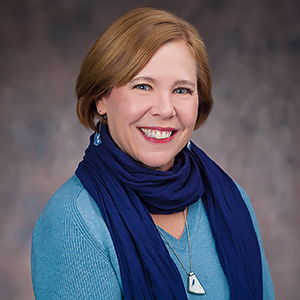Hiring at American University
At American University’s Writing Studies Program, there are two distinct types of employees: full-time “term” instructors and part-time “adjunct” instructors. Term instructors report to and are assessed by the chair of the Literature department (as well as the WSP review committee; more on that in a bit) and adjunct faculty report to and are assessed by the WPA, Lacey Wootton. Lacey and I met over Zoom on Friday, 02/07 to discuss the process of getting hired, assessed, promoted, or terminated in AU’s Writing Studies Faculty.
The Search & Hire
For adjunct faculty, Lacey is responsible for the hiring and supervising. She has been hiring adjuncts every semester since there are constantly more and more students, and the turnover and fairly consistent. There is a general pool of adjunct applications and Lacey keeps a Dropbox of information so that when it’s time to hire for the next semester, she is able to comb through the most recent ones and figure out who to contact, interview, check references, and then (if all of the previous checks out) hire them. Lacey does all of this on her own and it’s a relatively quick process, limited to local applicants.
For term faculty, there’s a more involved, formal search (but this search is not funded, meaning there’s no money for flying people out or hiring them). In the recent years, there have been less replacement hires (meaning people who left the position and it needs to be filled by someone new) and more term-line additions (meaning creating new term positions).
She notes that there has not been as high of turnover for term faculty. For this, the Writing Studies Program has a hiring committee where they go through steps to diversify the pool and get approval for the search. They put together a hiring committee, people submit through Interfolio, and then the committee interviews once (either in-person or over the phone). This process generally takes about two-to-three weeks, usually around May.
Requirements for Hiring Faculty
Lacey notes that she never hires anyone without teaching experience, except graduate students or recent graduates from AU who went through AU’s specific pedagogical training (which includes specific coursework and portfolio work).
For an adjunct faculty member, she looks for at least one year of teaching experience. For term faculty, because the pool is getting more and more competitive, she’s been requiring two-to-three years of experience and they’ve been hiring more PhDs. However, the base requirement for these positions (adjunct or term) is an MA or MFA in English or Rhet/Comp specifically.
For graduate students, they go through a specific program focused on pedagogy called “Teaching Practicum” and they can begin teaching while they are still students or will come in as adjunct faculty fresh after graduation. The difference in hiring grad students is that they put together portfolios from their practicum and then small writing studies committees interview grad students (more casually than the other committees) as a group. Some might not get hired if they are deemed to not be ready to teach on their own quite yet.
Because the landscape for hiring is getting more and more competitive as well, she noted that every new hire has recently had a unique writing perspective, such as international and technical communication,
You’re hired! Now what?
Once you are hired, you will go through a week-long summer conference put together by the Professional Development Committee. After the conference and pedagogical training, new faculty are matched with mentoring faculty, which are more senior term faculty who give formative assessments each month of the adjunct faculty. Lacey is the direct supervisor for the adjunct faculty while full-time faculty report to the department chair.
Lacey is a big proponent of the NCTE’s Principle 11: “Sound writing instruction is provided by instructors with reasonable and equitable working conditions.” For example, the adjunct faculty are unionized, meaning that they have a union that votes for their benefit, such as ensuring particular class-size, ensuring course load for adjunct faculty, etc.
Lacey notes that sometimes there are issues in compromising what the institution asks you to do as a WPA that might not align with your ethical values in terms of academic labor; however, she has been supported quite a bit with her decisions in the program. Lacey is considered by the adjunct union as management, so she has to handle the union’s negotiations. If there are violations and grievances with the institution, adjunct can formly lodge complaints and have the union back them up. Seth Kahn lays out the do’s and don’t’s of unionizing in his piece “What is a Union” where he also notes that, “on a union campus, the odds are very high that you’ll find a very detailed hiring protocol…[it’s important] to follow it” (263). However, Lacey, while working with the adjunct union, notes that the hiring is fully up to her.
Term faculty decided a few years ago not to unionize, according to lacey, because there’s “not that much the union could get us that we don’t already have… There’s language in the faculty manual that addresses most of the things that the union would be able to get for us. We’ve pretty much accomplished everything a union could do on our own already…” (Lacey 2020)
Reviewing Faculty
Every year, there is a reappointment committee made up of senior writing faculty. Term faculty construct a full dossier of teaching documents that go through the reappointment committee, there’s an interview and review discussion, and then the documents are approved and sent upward through the department chair and then to the dean. None of the term faculty (Lacey included) are tenure-track.
There is no room or growth that could become tenure track. There are creative writing faculty in the literature department who are tenure-line, but no WSP faculty are tenured. I asked if this was a source of contention within the department and Lacey noted that there used to be sharper tensions with this issues due to status issues. For example, there were tenured faculty in the department who were dismissive (sometimes very overtly) of the writing studies program.
However, writing faculty have always had a vote in the department and overtime, as those with higher status in the university joined in the writing studies program (such as one faculty who doubles as the Gen Ed Program Coordinator and Lacey being a former faculty senate chair), the faculty in the WSP gained more respect within the department.
The only decisions that Lacey makes in these cases are either involved with the adjuncts or made alongside other faculty. She notes that they have a flattened hierarchy and feminist model of collaboration in order to stress the inclusion and best practices of hierarchical decisions within the program. While there are downsides to this model (for example, the faculty has to do more work), this model gives power to faculty decisions.
However, Lacey notes that there are still beliefs that she has more power than she actually has and she has to do a lot of convincing to new term faculty that she is not their boss.
Terminating or Re-Appointing
For many years, literature faculty reviewed the writing studies faculty reappointment files. Recently, the review process has broken off from the literature department and the writing studies program formed their own review committee, and Lacey notes that this has helped senior faculty give and receive better feedback as well as gain confidence in the department as a whole.
In her piece, “Professional Identity in a Contingent-Labor Profession: Expertise, Autonomy, Community in Composition Teaching,” Nancy Penrose discusses the struggle for teaching track faculty, especially in writing studies, to feel like true academics and professionals. One solution she offers is the communal atmosphere of pedagogical praise and commitment that AU has created.
Works Cited
CCCC Position Statement of Principles and Standards for the Post-Secondary Teaching of Writing http://www.ncte.org/cccc/resources/positions/postsecondarywriting
Kahn, Seth. “What is a Union?” A Rhetoric for Writing Program Administrators, in Malenczyk, pp. 211-222.
Penrose, Ann M. “Professional Identity in a Contingent-Labor Profession: Expertise, Autonomy, Community in Composition Teaching.” WPA 35.2 (Spring 2012): 108-126.
Personal Communication with Lacey Wootton via. Zoom on February 7th, 2020.

